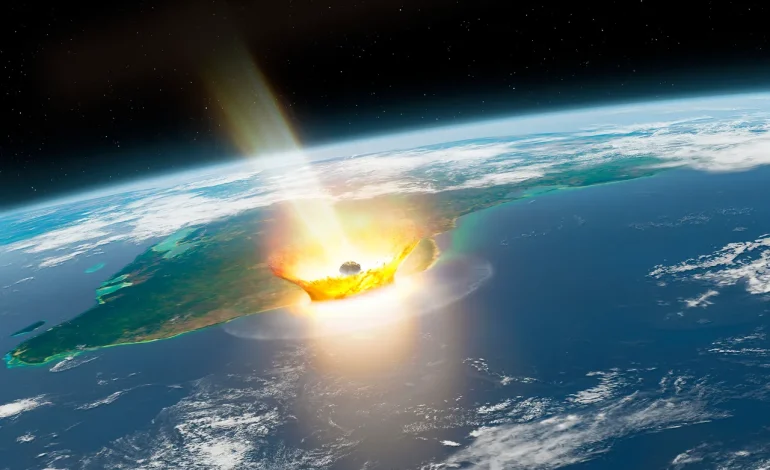Asteroid 2024 YR4, a near-Earth object measuring between 40 and 100 meters wide, is set to pass extremely close to Earth in December 2032.
While the majority of projections suggest it will miss the planet, scientists estimate a 2 percent chance that the asteroid could collide with Earth. If an impact were to occur, it could unleash the energy equivalent to an 8-megaton nuclear explosion, earning it the nickname “the city destroyer.”
The European Space Agency (ESA) and NASA have classified 2024 YR4 as a Level 3 threat on the Torino Scale, meaning its close approach warrants careful monitoring. The risk of impact was initially estimated at 1.2 percent before increasing to 2.3 percent and later stabilizing at 2 percent. As astronomers continue tracking its trajectory, they expect this risk assessment to become more precise.
If the asteroid were to hit Earth, experts believe it would likely explode in the atmosphere rather than make direct surface impact. This airburst could generate destructive shockwaves, affecting an area up to 50 kilometers (31 miles) in radius. The precise level of destruction would depend on the asteroid’s speed, mass, and composition.
Based on current calculations, scientists have outlined a “risk corridor”—a stretch of Earth’s surface where 2024 YR4 could potentially hit if it does not miss the planet. This corridor spans:
- Northern South America (including Venezuela, Colombia, and Ecuador)
- The Pacific Ocean
- Southern Asia (including India, Pakistan, and Bangladesh)
- The Arabian Sea and parts of Africa (including Ethiopia, Sudan, and Nigeria)
While these areas face a theoretical risk, experts emphasize that 98 percent of scenarios show the asteroid missing Earth entirely.
Given the asteroid’s potential threat, international agencies have activated monitoring protocols. The James Webb Space Telescope is now being used to gather more precise data on the asteroid’s size, trajectory, and composition. The telescope’s ability to detect infrared light will help refine predictions about 2024 YR4’s orbit.
In addition to observation, scientists are considering planetary defense strategies. The DART (Double Asteroid Redirection Test) mission, conducted by NASA in 2023, demonstrated that a kinetic impactor could alter an asteroid’s path. If 2024 YR4 remains a threat in the coming years, similar measures may be explored.
Asteroids occasionally raise alarms when they are first discovered, only for later calculations to show no real risk. A notable example is Apophis, an asteroid that was once projected to have a 2.7 percent chance of hitting Earth in 2029. However, after further study, scientists confirmed that Apophis poses no danger.
Similarly, while 2024 YR4 is being closely monitored, experts remain optimistic that future data will show no collision risk.
Astronomers will continue refining their models of the asteroid’s orbit as they collect more observational data. By the end of this month, 2024 YR4 will become too faint for most Earth-based telescopes to track, making the role of the Webb Telescope even more crucial.










The latest news in your social feeds
Subscribe to our social media platforms to stay tuned